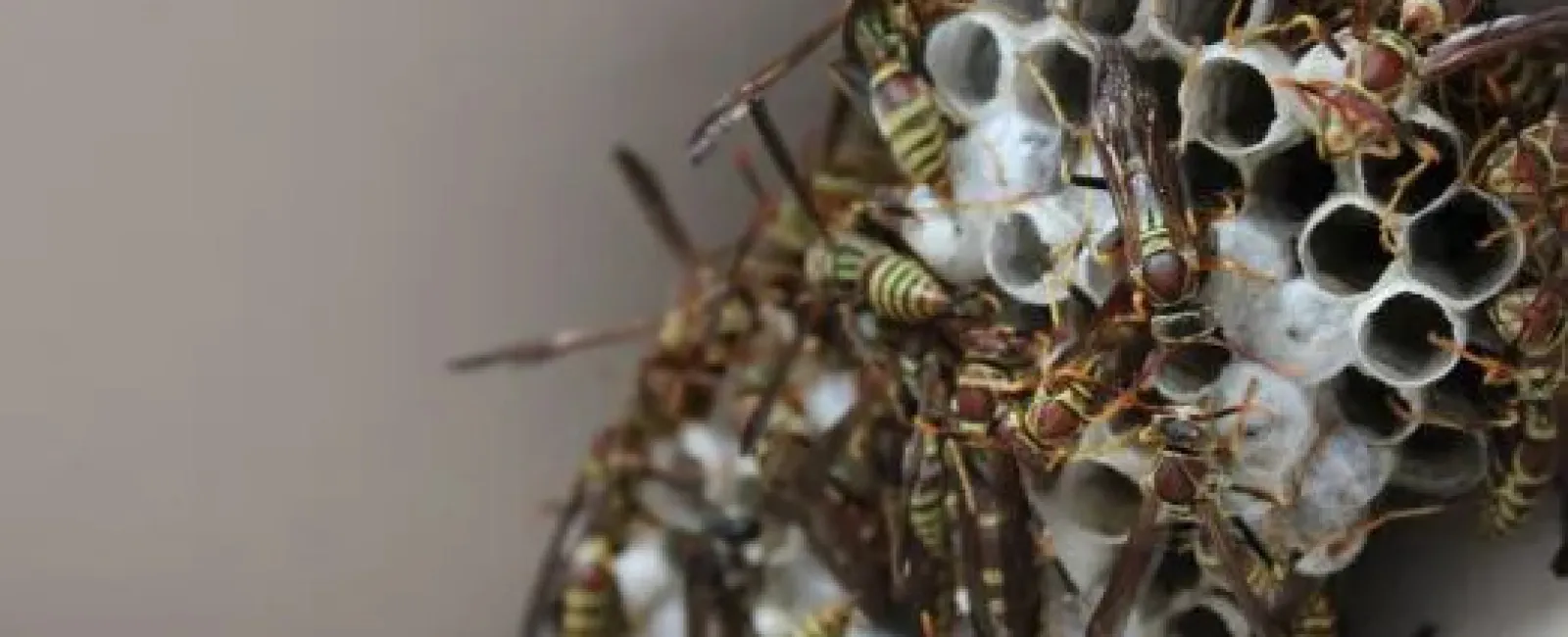Ah, summer. Sunshine, cookouts, pool floats… and paper wasps? Yep, just when you're about to relax on your porch, in flies a black-and-yellow buzzkill. Known for their umbrella-shaped nests and extremely painful stings, paper wasps are a summer staple we could all live without.
But don't sweat it. We're here to break down everything you need to know about these winged party crashers and how Greenix can help keep your summer sting-free.
Who Are These Winged Weirdos?
Paper wasps, also called umbrella wasps for their signature nest design, are social insects with a knack for home improvement. These stinging insects build nests out of wood fibers mixed with saliva, creating that iconic paper-like material you've seen hanging from porch ceilings, attic rafters, or tree branches.
Each paper wasp nest is a single-layer structure that looks like a tiny umbrella turned inside out, complete with a visible nest entrance. Inside, female wasps do all the heavy lifting: they lay eggs, defend the nest, and feed the colony.
And while they're not as highly aggressive as yellow jackets, they'll sting repeatedly if they feel threatened. That's a no thanks from us.
What Do Paper Wasps Feed On?
Paper wasps generally keep busy munching on caterpillars and other insects, making them considered beneficial in small doses. They also sip nectar and love hanging out in residential yards where flowers are blooming and grills are going.
But if a paper wasp nest pops up under your door frame or siding, their "benefits" start to feel like a perceived threat real quick.
How Paper Wasps Build & Expand
Come spring, new queens emerge from hiding spots like wall voids or other structural cavities. These female workers scout sheltered locations to build nests—anywhere that offers shade, safety, and access to food.
You'll often find nests on:
Porch ceilings
Attic rafters
Tree branches
Other sheltered areas
From there, queens lay eggs, raise small colonies, and prep future nests for the next season. Each single nest houses anywhere between 20 and 200 wasps with long legs, slim body shapes, and those signature yellow markings.
Pro tip: Don't confuse them with yellowjackets or honey bees. While all three are social wasps, paper wasps are less aggressive, but can still sting multiple times if provoked.
Late Summer: A Wasp Wonderland
Late summer is peak wasp season. Colonies are at their largest, and egg laying is in full swing. That means more wasps flying around your BBQ, snooping near your soda can, and checking out your patio furniture for new nest real estate.
The Sting Situation
We're not trying to cause alarm, but paper wasp stings can be extremely painful, and for anyone with an allergic reaction, they're downright dangerous.
Worse? These wasps can sting repeatedly, and male wasps might even join the fray, though they typically don't have stingers. They just show up for moral support.
Greenix to the Rescue
Forget fly swatters and DIY sprays. Integrated pest management with Greenix is your best bet to banish wasp nests for good. Our expert Pest Nerds know the difference between umbrella wasps, yellow jacket nests, and other species, and we've got the know-how to safely remove them from even the trickiest protected locations.
We'll inspect social wasp activity, pinpoint potential nest construction zones, and help prevent a new nest from ever forming. So you can focus on sunscreen and lemonade, not swatting wasps off your sandwich.
Don't Let Paper Wasps Crash Your Summer
Whether it's European paper wasps under your deck or an umbrella-shaped nest by the garden hose, don't let these uninvited guests run your summer.
Call Greenix and let's show those paper wasps the door so you can get back to enjoying your backyard (sting-free, of course).

